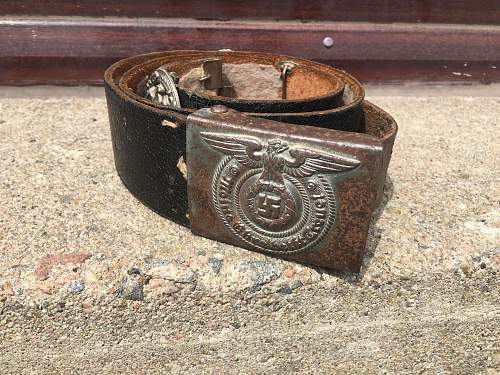Mk2. The Glasgow Highlanders
In 1920, the Territorial Force was re-established as the Territorial Army, and the Glasgow Highlanders re-raised a single battalion. It later moved to a new Headquarters, (in what became known as Walcheren Barracks) in Maryhill in 1935.[6]
Still part of the 157th Infantry Brigade of 52nd (Lowland) Infantry Division, the 1st Battalion was sent overseas to France in 1940 as part of the Second British Expeditionary Force (see Operation Ariel) to cover the withdrawal of the BEF being evacuated from Dunkirk. With the rest of the division, the 1st Battalion spent the next four years training in the United Kingdom and, from May 1942 until June 1944, was trained in mountain warfare and later in airlanding operations. In early October 1944 the 52nd Division was sent to Belgium, coming under command of the First Canadian Army, and saw service most notably during the capture of Walcheren Island during the Battle of the Scheldt.[7]
In the spring and summer of 1939, the Territorial Army was ordered to be doubled in size, in order to meet the threat of Nazi Germany. As a result, the 1st Battalion raised a duplicate unit, the 2nd Battalion which was assigned to the 46th (Highland) Infantry Brigade, 15th (Scottish) Infantry Division. With the division, the 2nd Battalion remained in the United Kingdom until it was sent overseas, to France, in June 1944. The battalion fought in the Battle of Normandy in Operation Epsom and the Second Battle of the Odon, followed by Operation Bluecoat and the subsequent Allied advance from Paris to the Rhine. The battalion later played a small part in Operation Market Garden, later taking part in Operation Veritable and crossing the Rhine in Operation Plunder, finally advancing into Germany in the Western Allied invasion of Germany. During Operation Epsom "the 2nd Battalion, The Glasgow Highlanders lost 12 officers and sustained nearly 200 casualties, mainly around the hotly contested village of Cheux. Total strength of this battalion was approximately 35 officers and 786 other ranks; thus one day’s losses amounted to 34% of their officers and nearly 25% of the entire rifle battalion








